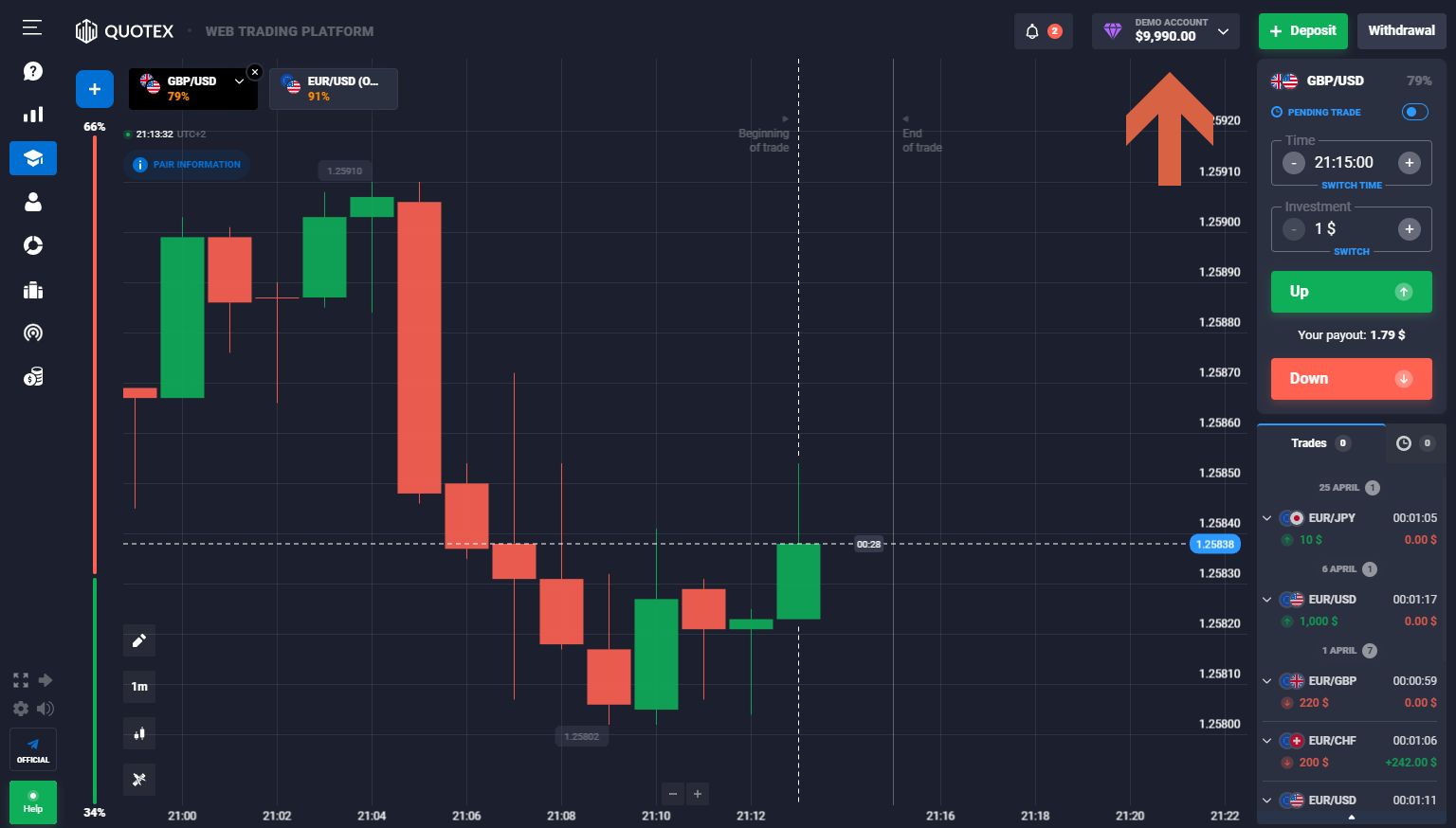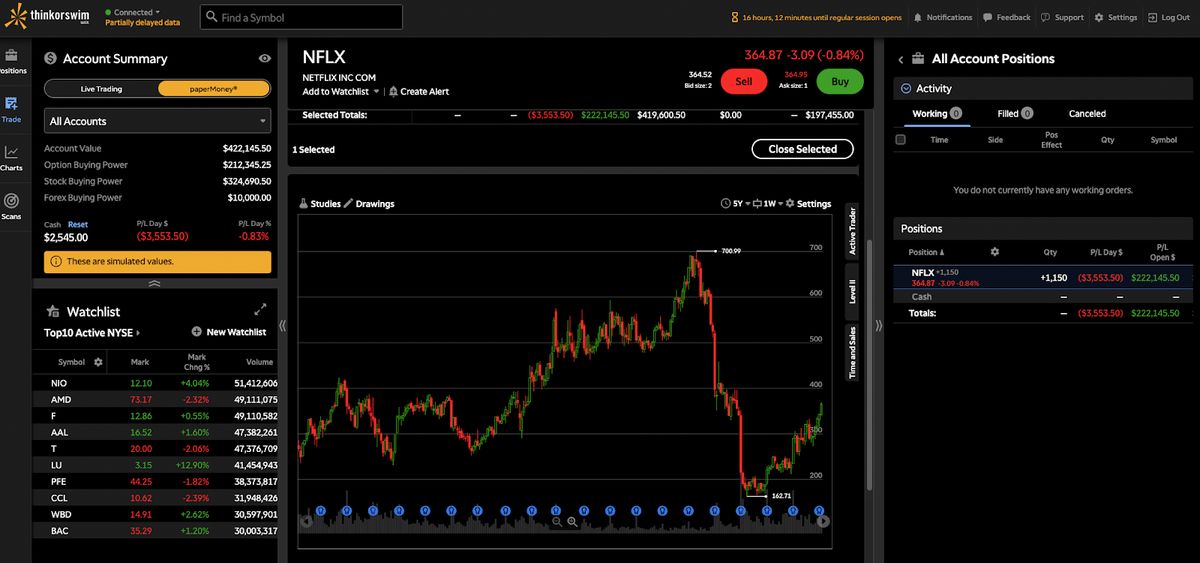Introduction
Are you interested in exploring new investment opportunities? Perhaps you’ve heard about HFX trading and you’re curious to learn more. HFX, which stands for High-Frequency Trading, is a trading strategy that has gained significant popularity in recent years. It involves the use of complex algorithms and powerful computer systems to execute a large number of trades in a short period of time. In this article, we will delve into the world of HFX trading, its benefits, risks, and how you can get started.
HFX trading has revolutionized the financial markets by increasing trading speed and efficiency. It allows traders to take advantage of tiny price discrepancies and fluctuations in the market to generate profits. While HFX trading is often associated with large financial institutions and hedge funds, individual traders can also participate in this exciting and potentially profitable strategy.
The heart of HFX trading lies in its ability to quickly respond to market conditions and execute trades at lightning speed. By analyzing vast amounts of market data and exploiting short-term trends, HFX traders aim to capitalize on even the slightest price movements. This rapid trading style requires advanced technological infrastructure, sophisticated algorithms, and real-time access to market data.
However, it is important to note that HFX trading is not without its risks. The volatile nature of the financial markets means that HFX traders are susceptible to significant losses if the market moves against their positions. Additionally, the use of high leverage amplifies both potential profits and losses, making risk management a crucial aspect of HFX trading.
If you’re considering venturing into the world of HFX trading, it is essential to carefully research and understand the intricacies of this trading strategy. In the following sections, we will provide a comprehensive overview of how HFX trading works, the benefits it offers, the potential risks involved, and practical tips to ensure your success in this fast-paced trading environment.
What is HFX Trading?
HFX trading, also known as High-Frequency Trading, is a trading strategy that involves the rapid buying and selling of financial instruments, such as stocks, currencies, and commodities, within a fraction of a second. It utilizes sophisticated algorithms and powerful computer systems to analyze market data and execute trades at high speeds.
HFX trading operates on the principle that even the smallest price discrepancies in the market can be exploited for profit. By placing a large number of trades in a short period of time, HFX traders aim to generate small but consistent profits from these price fluctuations.
One of the key characteristics of HFX trading is its reliance on advanced technology. HFX traders use high-speed trading platforms, co-located servers, and direct market access to ensure the fastest execution of their trades. This allows them to take advantage of market opportunities before other traders can react.
Another important aspect of HFX trading is the use of complex algorithms. These algorithms are designed to analyze vast amounts of market data, identify trends and patterns, and make split-second decisions on when to enter or exit a trade. The algorithms are continuously optimized and adjusted to adapt to changing market conditions.
HFX trading is most commonly associated with large financial institutions and hedge funds due to the significant capital and technological resources required. However, advancements in technology and the availability of online trading platforms have made it possible for individual traders to participate in HFX trading as well.
While HFX trading can offer exciting profit opportunities, it is not without its challenges. The intense competition among HFX traders and the complex nature of the strategy require a deep understanding of market dynamics, sophisticated technology, and strict risk management practices.
In the next section, we will delve deeper into how HFX trading works and explore the intricacies of this high-speed trading strategy.
How Does HFX Trading Work?
HFX trading operates on the principle of capitalizing on small price discrepancies in the market. It involves a series of steps that take place at lightning speed, allowing traders to execute numerous trades within a fraction of a second.
The first step in HFX trading is data analysis. HFX traders employ advanced algorithms and software programs to analyze vast amounts of market data in real-time. This includes price movements, trade volumes, order book data, and other relevant indicators. The algorithms utilize complex mathematical models to identify patterns and trends that may indicate potential trading opportunities.
Once the algorithms detect a favorable trading opportunity, the next step is trade execution. HFX traders utilize high-speed trading platforms and direct market access to execute trades instantly. This allows them to take advantage of the identified opportunity before the market conditions change.
One common strategy used in HFX trading is known as “arbitrage.” Arbitrage involves simultaneously buying and selling the same financial instrument in different markets or exchanges to profit from the price differences. For example, if a stock is trading at a higher price on one exchange compared to another, HFX traders can quickly buy the stock at the lower price and sell it at the higher price, making a profit from the price discrepancy.
Another popular strategy in HFX trading is “market-making.” Market-makers play a crucial role in providing liquidity to the market by continuously offering to buy and sell financial instruments. They profit from the difference between the buying and selling price, known as the “spread.” HFX traders employing market-making strategies use their algorithms to quote competitive bid and ask prices and execute trades at high-frequency to capture small profits on each transaction.
Risk management is a critical aspect of HFX trading. Due to the rapid pace of trading and the potential for significant losses, HFX traders employ various risk management techniques. This includes setting stop-loss orders to limit potential losses, utilizing hedging strategies to offset risks, and closely monitoring market conditions to react swiftly to any adverse movements.
Through the use of advanced technology, complex algorithms, and rapid execution, HFX trading aims to generate profits from small price discrepancies in the market. In the next sections, we will explore the benefits and risks associated with HFX trading, as well as tips for successful participation in this fast-paced trading environment.
Benefits of HFX Trading
HFX trading offers several advantages that attract both institutional investors and individual traders. Let’s explore some of the key benefits of participating in HFX trading.
1. Faster Execution: HFX trading leverages advanced technology and high-speed trading platforms to execute trades within milliseconds. This allows traders to take advantage of fleeting market opportunities and capitalize on small price discrepancies before they vanish.
2. Increased Liquidity: HFX traders who employ market-making strategies contribute to market liquidity by continuously providing buy and sell quotes. This helps ensure that there is always a ready market for buying or selling financial instruments, reducing the impact of large trades on prices.
3. Diversification of Investment Portfolio: HFX trading allows investors to diversify their portfolios by gaining exposure to various financial instruments, including stocks, currencies, commodities, and more. This diversification can help reduce risk and increase potential returns.
4. Potential for High Profits: Due to the high trading volumes and the ability to capitalize on small price movements, HFX trading has the potential to generate significant profits. Successful HFX traders can earn substantial returns in a relatively short period of time.
5. Access to Advanced Technology: Participation in HFX trading provides access to cutting-edge technology and trading tools. From powerful algorithms to real-time market data, traders can leverage these resources to make informed trading decisions and execute trades with precision.
6. Automation and Algorithmic Trading: HFX trading relies heavily on algorithms and automation. Traders can pre-program their strategies, allowing the algorithms to analyze data and execute trades automatically. This eliminates the need for manual intervention and enables traders to take advantage of multiple opportunities simultaneously.
7. 24/7 Market Access: HFX trading operates globally, allowing traders to access the market 24 hours a day, five days a week. This provides flexibility in trading schedules and the potential to capture trading opportunities in different time zones.
8. Learning and Continuous Improvement: Participating in HFX trading requires continuous learning and adaptation. Traders gain valuable insights into market dynamics, develop financial acumen, and sharpen their analytical skills. This constant learning process can contribute to personal and professional growth.
While HFX trading offers numerous benefits, it’s important to be aware of the associated risks. In the next section, we will discuss some of the potential risks involved in HFX trading and how to manage them effectively.
Risks of HFX Trading
While HFX trading offers the potential for high profits, it is essential to understand and manage the risks involved. Here are some key risks to consider when participating in HFX trading:
1. Market Volatility: The financial markets can be highly volatile, and HFX trading amplifies the impact of price fluctuations. The rapid pace of trading makes HFX traders vulnerable to significant losses if the market moves against their positions. It is crucial to carefully assess market conditions and have robust risk management strategies in place.
2. Technological Risks: HFX trading heavily relies on advanced technology infrastructure. Technical glitches, system failures, or cyber-attacks can disrupt trading operations and potentially lead to substantial financial losses. Traders must ensure they have reliable and secure technology systems in place to minimize such risks.
3. Regulatory and Compliance Risks: HFX trading is subject to various regulatory frameworks that differ across jurisdictions. Traders need to stay informed about the legal and compliance requirements associated with HFX trading and ensure full adherence to relevant regulations and guidelines.
4. Liquidity Risk: While HFX trading generally contributes to market liquidity, there may be instances of reduced liquidity or extreme price volatility, especially during periods of economic uncertainty or market stress. Traders must be prepared for sudden shifts in liquidity conditions and the potential impact on trade execution and pricing.
5. High Leverage: HFX trading often involves the use of high leverage, which can amplify both potential profits and losses. While leverage can magnify gains, it also significantly increases the risk of losing capital. Traders must exercise caution and carefully manage their leverage levels to avoid excessive risk exposure.
6. Competitive Landscape: HFX trading is a highly competitive field, with skilled traders and sophisticated trading firms actively participating. The intense competition can make it challenging to consistently generate profits. Traders need to continuously adapt their strategies and stay ahead of market trends to remain competitive.
7. Psychological Stress: The fast-paced nature of HFX trading, combined with the potential for significant gains or losses, can create psychological stress for traders. Emotion-driven decision-making or impulsive trading can lead to detrimental outcomes. Traders must maintain discipline, manage emotions effectively, and adhere to their predefined trading strategies.
8. Operational Risks: HFX trading requires precise execution and reliable infrastructure. Traders must ensure they have adequate backup systems, contingency plans, and reliable internet connections to minimize the risk of operational failures and disruptions.
Being aware of these risks and implementing appropriate risk management strategies is crucial for HFX traders. Effective risk management includes setting stop-loss orders, diversifying trading strategies, maintaining sufficient capital, and continuously monitoring market conditions.
In the next section, we will discuss how to get started with HFX trading and important considerations when choosing a reliable HFX trading platform.
Getting Started with HFX Trading
If you’re interested in exploring HFX trading, here are some important steps to help you get started:
1. Educate Yourself: Before venturing into HFX trading, it is crucial to educate yourself about the intricacies of this trading strategy. Familiarize yourself with the fundamental concepts, terminology, and risk management practices associated with HFX trading. There are numerous online resources, tutorials, and courses available that can provide valuable insights into HFX trading.
2. Define Your Trading Goals and Risk Tolerance: Determine your trading objectives and risk tolerance level. Are you looking for short-term gains or long-term growth? What is your risk appetite? Establishing clear goals and risk tolerance will help you develop a trading plan tailored to your individual needs.
3. Set Up a Trading Account: Choose a reputable online broker or trading platform that offers HFX trading. Ensure that the platform provides access to the markets and tools you need for HFX trading, such as advanced charting, real-time market data, and fast execution speeds. Open a trading account and complete the necessary verification procedures.
4. Allocate Sufficient Capital: Allocate a portion of your investment capital specifically for HFX trading. HFX trading involves the use of leverage, so it’s important to have sufficient funds to cover potential losses and margin requirements. Do not risk more than you can afford to lose.
5. Develop a Trading Strategy: Create a well-defined trading strategy based on your goals, risk tolerance, and market analysis. Determine the indicators, timeframes, and entry/exit criteria you will use. Regularly review and adapt your strategy as market conditions evolve.
6. Practice with Demo Accounts: Many trading platforms offer demo accounts that allow you to practice HFX trading with virtual money. Utilize these accounts to test your trading strategy, become familiar with the platform’s features, and gain practical experience without risking real funds.
7. Start with Small Positions: As a beginner, it’s advisable to start with small position sizes. This allows you to gain confidence, learn from your trades, and manage risks more effectively. Gradually increase your position sizes as you become more experienced and comfortable with HFX trading.
8. Continuously Monitor and Evaluate: Regularly monitor the markets, analyze price patterns, and stay updated with economic news and relevant events that may impact the markets. Evaluate your trades and performance to identify areas for improvement and refine your trading strategy accordingly.
Remember, success in HFX trading requires discipline, patience, and a commitment to continuous learning. Be prepared to dedicate time and effort to honing your skills and adapting to market dynamics.
In the next section, we will discuss important considerations when choosing a reliable HFX trading platform.
Choosing a Reliable HFX Trading Platform
When it comes to HFX trading, choosing a reliable trading platform is crucial for your success. Here are some key considerations to keep in mind when selecting an HFX trading platform:
1. Regulation and Security: Ensure that the trading platform is regulated by a reputable financial authority. Regulation provides an added layer of trust and ensures that the platform operates in compliance with industry standards. Additionally, prioritize platforms that offer robust security measures, such as encryption of personal and financial data, to protect your information from unauthorized access.
2. Trading Instruments and Markets: Check if the trading platform offers a wide range of financial instruments and markets for HFX trading. You may want to diversify your portfolio and have access to various asset classes, including stocks, currencies, commodities, and indices. The ability to trade in multiple markets will provide more opportunities for profit.
3. Execution Speed and Reliability: HFX trading requires fast and reliable execution. Look for platforms that offer low latency and high-speed trade execution to ensure that your trades are carried out swiftly and accurately. Delayed or faulty execution can significantly impact your trading results.
4. Trading Tools and Resources: Evaluate the trading tools and resources provided by the platform. Look for platforms that offer advanced charting capabilities, real-time market data, technical analysis indicators, and risk management tools. These features can enhance your trading experience and assist in making informed trading decisions.
5. Platform Stability and Uptime: Platform stability and uptime are critical for uninterrupted trading. Research user reviews and check the platform’s history of downtime or technical issues. A reliable platform should have a robust infrastructure and consistently high uptime to ensure smooth and seamless trading operations.
6. Customer Support: Consider the quality and availability of customer support provided by the platform. Responsive and knowledgeable customer support can be invaluable, especially during times of technical difficulties or when you have inquiries regarding your account or trading activities.
7. Fees and Commissions: Review the fee structure and trading commissions charged by the platform. Compare the costs across different platforms, considering factors such as spreads, commissions, and withdrawal fees. Look for platforms that offer competitive pricing without compromising on essential features and services.
8. User-Friendliness: Evaluate the platform’s user interface and ease of use. A user-friendly platform with intuitive navigation and a well-designed interface can streamline your trading experience and help you execute trades efficiently. Look for platforms that offer customizable layouts and personalization options to suit your preferences.
It’s essential to thoroughly research and compare different HFX trading platforms before making a decision. Consider your specific trading requirements, preferences, and goals when selecting a platform that aligns with your needs. Keep in mind that flexibility and scalability are also essential, as your trading journey may evolve over time.
By choosing a reliable HFX trading platform, you can enhance your trading experience, minimize technical glitches, and increase your chances of success in the fast-paced world of HFX trading.
In the next section, we will provide some practical tips to help you succeed in HFX trading.
Tips for Successful HFX Trading
HFX trading can be a rewarding endeavor, but it requires skill, discipline, and continuous learning. Here are some practical tips to help you succeed in HFX trading:
1. Develop a Solid Trading Plan: Create a well-defined trading plan that outlines your goals, risk tolerance, and trading strategies. Include specific entry and exit criteria based on thorough analysis and stick to your plan even during periods of market volatility.
2. Stay Informed: Stay updated with the latest market trends, economic news, and events that may impact the financial markets. Utilize news sources, economic calendars, and expert analysis to make informed trading decisions.
3. Practice Risk Management: Implement effective risk management techniques to protect your capital. Set stop-loss orders to limit potential losses and avoid overexposure to a single trade. Maintain proper position sizing and avoid overtrading. Remember, preserving capital is as important as making profits.
4. Utilize Technical Analysis: Leverage technical analysis tools and indicators to identify trends, support, and resistance levels. This can help you make informed decisions about entry and exit points. Combine technical analysis with fundamental analysis for a comprehensive trading strategy.
5. Embrace Continuous Learning: HFX trading is a dynamic field that constantly evolves. Commit to continuous learning by staying updated with new trading strategies, attending webinars or workshops, and reading educational materials. Develop a curious mindset and never stop seeking knowledge to improve your trading skills.
6. Keep Emotions in Check: Emotional decision-making can lead to impulsive trades and poor results. Control your emotions and avoid making rash decisions based on fear or greed. Stick to your trading plan and rely on logical analysis rather than impulsive reactions to market fluctuations.
7. Maintain Discipline: Discipline is vital in HFX trading. Follow your trading plan diligently, even during winning streaks or losing periods. Avoid chasing trades or deviating from your strategy based on impulsive impulses or external factors.
8. Monitor and Evaluate Your Performance: Regularly monitor your trades and evaluate your performance. Review your strengths and weaknesses, and identify areas for improvement. Keep a trading journal to record your trades, strategies, and emotions. Analyzing past trades can provide valuable insights into your trading patterns and habits.
9. Utilize Demo Accounts: Practice using demo accounts offered by trading platforms to refine your strategies and gain experience without risking real money. Demo accounts allow you to familiarize yourself with the platform and test different trading techniques in a simulated environment.
10. Surround Yourself with a Supportive Community: Connect with fellow HFX traders, join trading communities, or engage in forums where you can share experiences, seek advice, and gain insights from others. Having a supportive network can provide valuable guidance and motivate you during challenging times.
Remember, success in HFX trading requires patience, perseverance, and a commitment to continuous improvement. By implementing these tips and developing your skills over time, you can increase your chances of achieving consistent profitability in the exciting world of HFX trading.
Conclusion
HFX trading, with its high-speed nature and potential for significant profits, has captured the attention of traders and investors worldwide. This article has provided an overview of what HFX trading is, how it works, its benefits, risks, and essential considerations for those looking to get started in this exciting trading strategy.
HFX trading leverages advanced technology, complex algorithms, and rapid trade execution to capitalize on small price discrepancies in the market. It offers benefits such as faster execution, increased liquidity, potential for high profits, and access to advanced trading tools and resources. However, it is not without risks, including market volatility, technological risks, and competition from skilled traders.
To get started with HFX trading, it is crucial to educate yourself, define your trading goals and risk tolerance, choose a reliable trading platform, and develop a solid trading strategy. Practicing effective risk management, staying informed, utilizing technical analysis, and maintaining discipline are key factors for success in HFX trading.
Remember, HFX trading requires continuous learning, adaptation, and the ability to manage emotions. It is essential to continuously monitor your performance, learn from your trading experiences, and make necessary adjustments to improve your trading outcomes.
Although HFX trading offers opportunities for profit, it is important to approach it with caution and always trade responsibly. Never risk more than you can afford to lose and be aware of the potential risks associated with HFX trading.
By applying the tips and strategies outlined in this article, you can enhance your chances of success in the fast-paced and dynamic world of HFX trading. Stay informed, practice diligently, and stay disciplined to achieve your HFX trading goals.

























